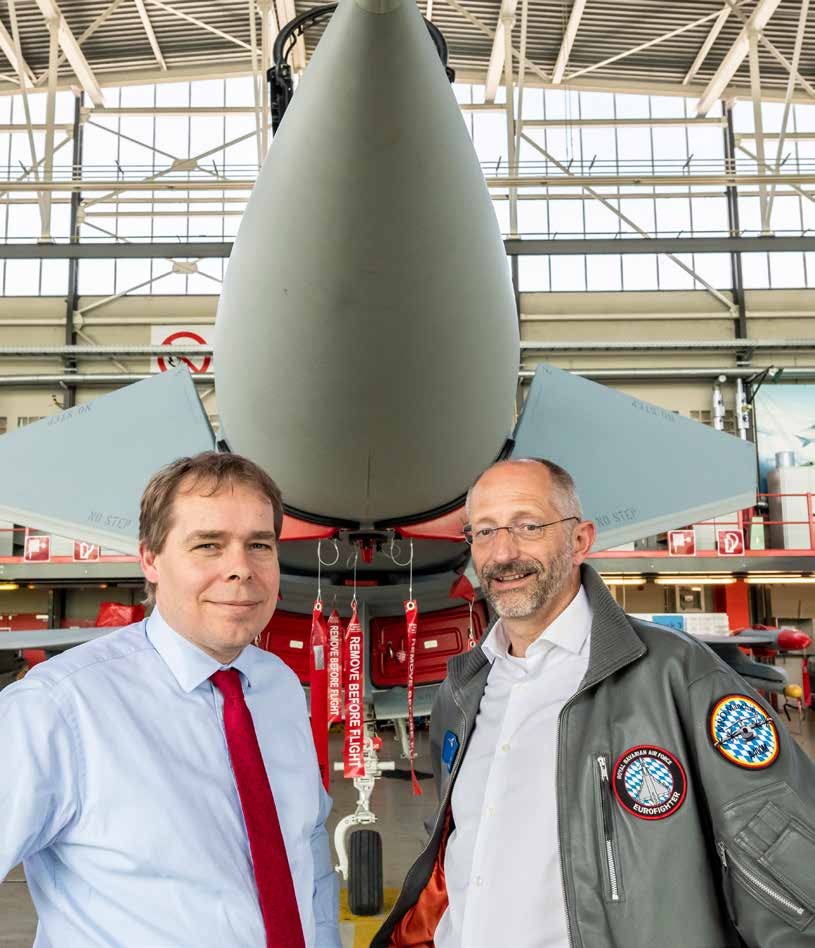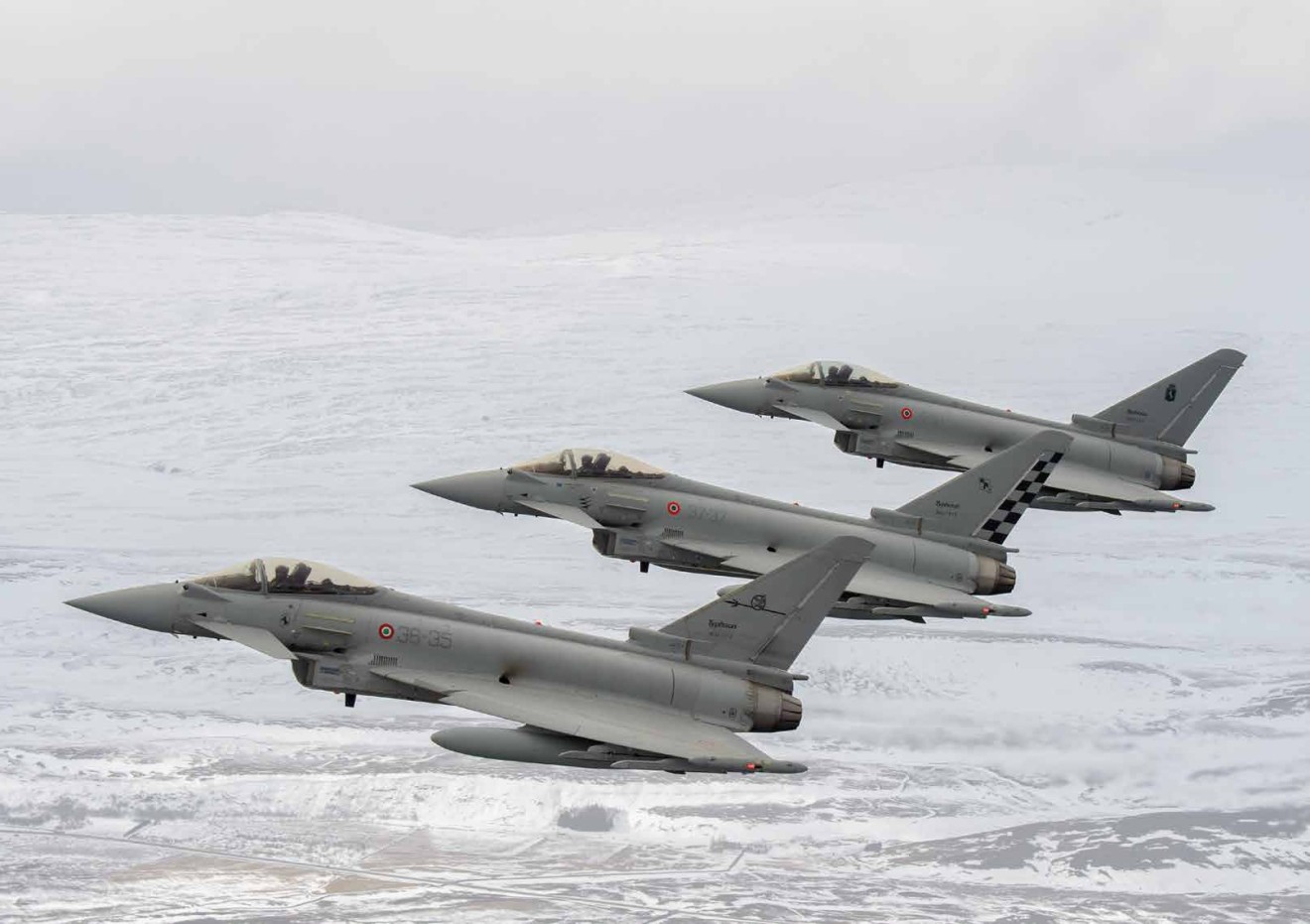Herman Claesen sums up sovereignty in one word — crucial.
“Air combat capability is a key part of the defensive arsenal for many governments, but you have to be able to exercise it the way you want to — that’s Freedom of Action, and that’s what sovereignty is all about,” says the Eurofighter CEO.
“Eurofighter is a data driven aircraft — it generates data and uses (mission) data to deliver the desired operational effect. If your air force is unable to harness this data it significantly constrains the full capability of the aircraft. With Eurofighter, you have control over the data.
“If you don’t have sovereignty, your’e entirely dependent on the rules other nations place on you”
Kurt Rossner says sovereignty is one of the most powerful enablers for nations. “It gives you the ability to develop a mission with your own data. Sovereignty brings other advantages too. It helps nations command a seat at the world, political and economic table.
“The fighter is one of the biggest symbol of a nation’s sovereignty — it shows the international world that you’re an important nation with mission capability. And with Eurofighter, it’s also a symbol of economic power because for every Euro spent on Eurofighter you receive 1.2 Euros back into your economy.”
JOINING FORCES
Control really matters in a world where established alliances are being strained and new threats are emerging.
“In recent years we’ve seen the world pivot towards ‘nation first’ views,” says Herman. “In this environment, defence ministries and air forces are starting to rethink where they source their equipment from. It is understandable that they look for alternatives and organisations that they can reliably collaborate with. It is worth remembering that Eurofighter is a collaborative programme, it’s our second nature, quite frankly, it’s our first nature.
“Such high-quality collaboration doesn’t just happen overnight. It’s thanks to years of experience, going back through Eurofighter’s predecessor Tornado. Today it’s in our approach to new customers, which says: ‘Let’s work together to ensure you can satisfy your national sovereign requirements.”
Kurt says Eurofighter sets the benchmark for collaborative programmes in the defence world
“Eurofighter started life as a collaboration between nations and the industry partners developed it, so it’s in our DNA. The aircraft was designed with multi-national mission capability, with an open architecture and open use in mind. In addition, the respective capabilities that each industry partner are able to bring to the table delivers a unique benefit for all users.”
With export customers looking for political relationships as well as operational capability, this Eurofighter partnership model is a significant proven strength. Governments can strengthen relationships with four nations rather than just one. The Eurofighter world is characterised by cross-border industrial partnering and high levels of co-operation between core nation forces.
Says Herman: “Air forces actively learn from each other, working on how they can exploit the jet to advance their doctrines, sharing information beyond the usual military exercises. It’s a phenomenal benefit. No-one should ever lose sight of the fact we are delivering truly exceptional world-beating capability, whilst delivering the other benefits of a collaboration in terms of cost, political alliances and sustainment of skills in the Eurofighter partner nations.”

As well as leading-edge capability, Eurofighter provides work for over 400 supply chain companies, sustaining over 100,000 jobs across Europe. The programme sets technical standards too. “Carbon fibre manufacturing is a good example,” says Kurt. “Eurofighter was ‘the’ enabler for the whole aeronautical industry to develop carbon fibre capability. The civil aviation industry learned a lot from us. Now we’re looking at advances in mission capability, sensor capability, computing power, data connection and communication technology.”
And, with constant development being a cornerstone of the programme, it is destined to be the bridge into the next European air combat programme, ensuring Europe can continue to develop this kind of capability in line with sovereign requirements.
FIT FOR THE FUTURE
It is clear that any future air combat programme will be a collaborative one, with nations joining together and sharing knowhow, giving developers a much broader knowledge base. But how will Eurofighter fit into this emerging picture?
Kurt describes Eurofighter as both an enabler for a future system and a risk-reducer. “It makes sense to have an incremental development approach where risk is reduced at each step towards a new model of a mission capability. It will not only be a new platform that’s developed but the data exchange, the data usage and so on. That’s not possible if you start from zero — it has to be part of an incremental approach, with Eurofighter as a test bed.”
When you look at this idea of Typhoon as a bridge to the future there are key technologies that are already being looked at. One is sensor development via an E-scan radar, another is the avionic system architecture, where the intent is to make it easier to integrate equipment, capability, weapons and sensors.
Summing up, Herman says: “Choices being made now, around collaboration, investment and capability development, will shape the future but what’s already clear is that Eurofighter will be one of the most important assets in the future operating environment.”
